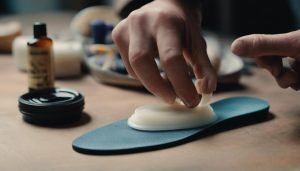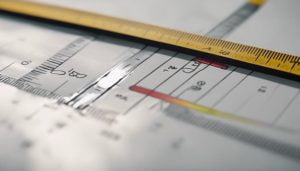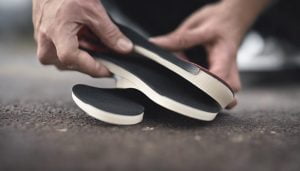This post contains affiliate links. As an Amazon Associate, we earn from qualifying purchases.
EVA insoles have gained prominence in the footwear industry for their unique properties that cater to both comfort and performance. Understanding the composition and functionality of EVA insoles unveils a world of benefits that extend beyond traditional footwear materials.
From enhancing support to promoting foot health, delving into the realm of EVA insoles opens up a broader discussion on how these simple yet effective components can revolutionize the way we perceive and experience footwear.
Key Takeaways
- EVA insoles are composed of ethylene-vinyl acetate foam for shock absorption and comfort.
- They offer cushioning, support, and customization by adapting to foot shape.
- Common in athletic footwear, EVA insoles provide durability and shape retention.
- Choosing the right EVA insoles involves considerations like thickness, arch support, and moisture-wicking properties.
Definition of EVA Insole
An EVA insole, also known as an ethylene-vinyl acetate insole, is a cushioning component commonly integrated into the midsole of footwear. Made from ethylene-vinyl acetate, a foam material, EVA insoles are recognized for their shock absorption and comfort benefits.
These insoles play a crucial role in reducing the impact on the feet during activities like walking or running. Proper placement, care, and timely replacement of EVA insoles are essential to enhance their durability and maintain optimal performance.
Due to their softness and flexibility, EVA insoles are favored for their ability to provide a cushioned feel, making them a popular choice for various types of shoes, including full-length, half-length, customized orthotic, and sport-specific designs.
Benefits of EVA Insoles
EVA insoles are highly regarded for their exceptional shock absorption and cushioning properties, making them a valuable addition to footwear for enhanced comfort and support during various activities such as walking or running. Known for their durability, EVA insoles are commonly used by top footwear brands due to their superior support features. They are available in different types, including full-length, half-length, 3/4 length, customized orthotic, and sport-specific options, catering to diverse needs.
Proper maintenance of EVA insoles is essential for longevity, involving airing them out, regular cleaning, avoiding direct heat, proper storage, and periodic inspection for wear and tear. Users should also follow trimming guidelines if needed and ensure correct placement for optimal performance.
How EVA Insoles Work
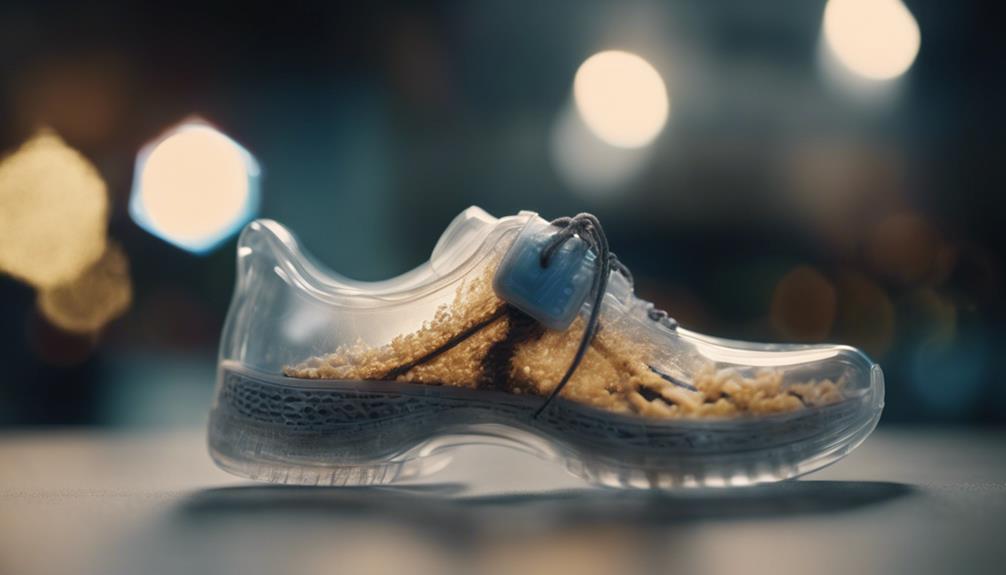
Functioning as a key component in footwear design, EVA insoles operate by delivering vital cushioning and shock absorption within the midsole structure of shoes. Particularly prevalent in athletic footwear, these insoles enhance comfort and support during various activities.
The EVA material adapts to the user's foot shape, providing a customized fit that increases overall comfort. Known for being lightweight, EVA insoles reduce the weight of the shoes, ensuring a pleasant wearing experience.
Moreover, their durability makes them a long-lasting option for different types of footwear, contributing to their popularity in the market. Overall, EVA insoles play a crucial role in optimizing the comfort, support, and performance of shoes, making them a preferred choice for many individuals.
Popular Uses of EVA Insoles
Widely integrated into a spectrum of footwear designs, EVA insoles serve as essential components that elevate comfort and performance for diverse activities.
- EVA insoles are commonly found in athletic footwear, providing improved shock absorption during various physical activities.
- They offer cushioning and support in the midsole, enhancing overall comfort for the wearer.
- EVA insoles come in different types such as full-length, half-length, and customized orthotic options, catering to individual needs for customized support.
These insoles are favored for their durability and ability to maintain shape over time, but they do require proper care and maintenance to ensure longevity and optimal performance.
Tips for Choosing EVA Insoles
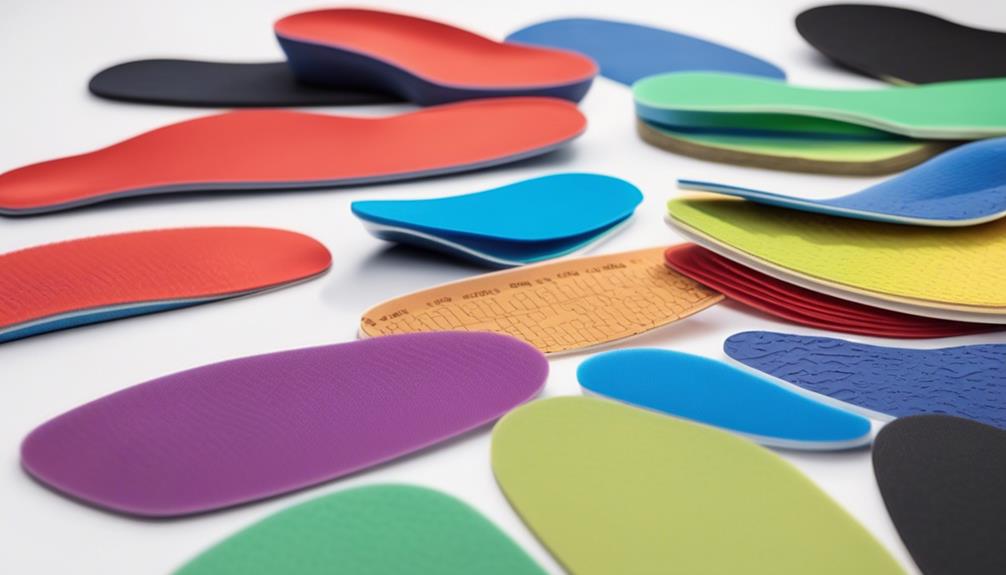
When selecting EVA insoles, it is crucial to consider factors such as thickness levels, arch support, moisture-wicking properties, antimicrobial features, and shock-absorbing capabilities to ensure optimal comfort and performance.
Look for EVA insoles with varying thickness levels to accommodate different shoe sizes and preferences.
For individuals with flat feet or high arches, choose EVA insoles with added arch support for better alignment and comfort.
Opt for EVA insoles with moisture-wicking properties to keep feet dry and comfortable, especially during long hours of wear.
Additionally, selecting EVA insoles with antimicrobial features can help prevent odor and bacteria buildup.
Lastly, for enhanced comfort during high-impact activities like running or sports, opt for EVA insoles with shock-absorbing capabilities.
Frequently Asked Questions
Is EVA Insole Good?
EVA insoles are beneficial as they provide excellent cushioning, shock absorption, and support in footwear. Their flexibility, comfort, durability, and ability to be customized make them a good choice for enhanced comfort and foot support, especially in athletic shoes.
What Does EVA Insole Mean?
An EVA insole is a foam insert used in footwear to provide cushioning and shock absorption. It enhances comfort and support in shoes, especially in athletic footwear. EVA insoles come in various lengths and are valued for their durability and shape-retention properties.
What Are the Disadvantages of EVA Sole?
Some disadvantages of EVA soles include reduced durability on natural surfaces, compression over time, limited protection on rough terrain, quicker wear in high-impact activities, and lower traction on slippery surfaces compared to rubber soles.
What Are the Disadvantages of EVA Foam?
EVA foam has drawbacks such as potential loss of cushioning over time, limited support compared to firmer materials, lower durability in high-impact activities, heat retention, and slightly higher cost. These factors should be considered when choosing materials.
Conclusion
In conclusion, EVA insoles are a foam material commonly used in footwear for their cushioning properties and shock absorption capabilities. They offer comfort, flexibility, and support, making them popular in athletic footwear.
EVA insoles are lightweight, durable, and provide a comfortable feel during various activities, making them a preferred choice for many individuals seeking enhanced comfort and performance in their shoes.

